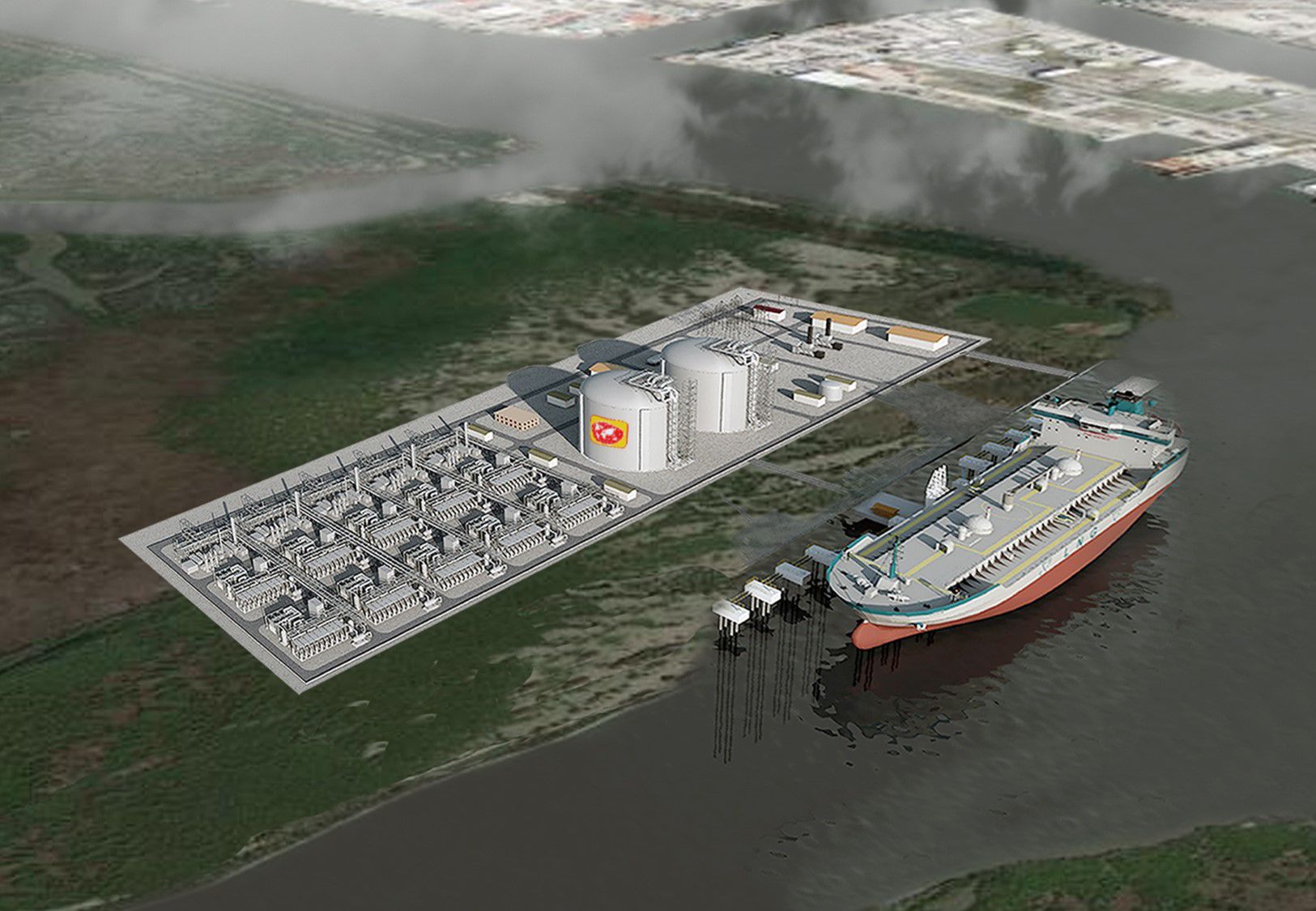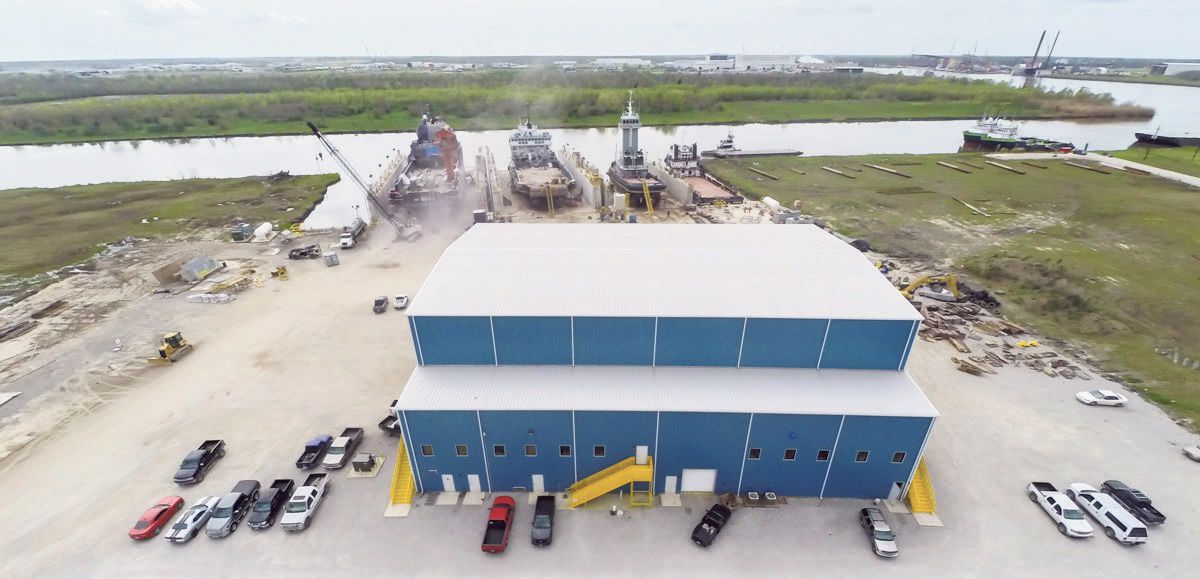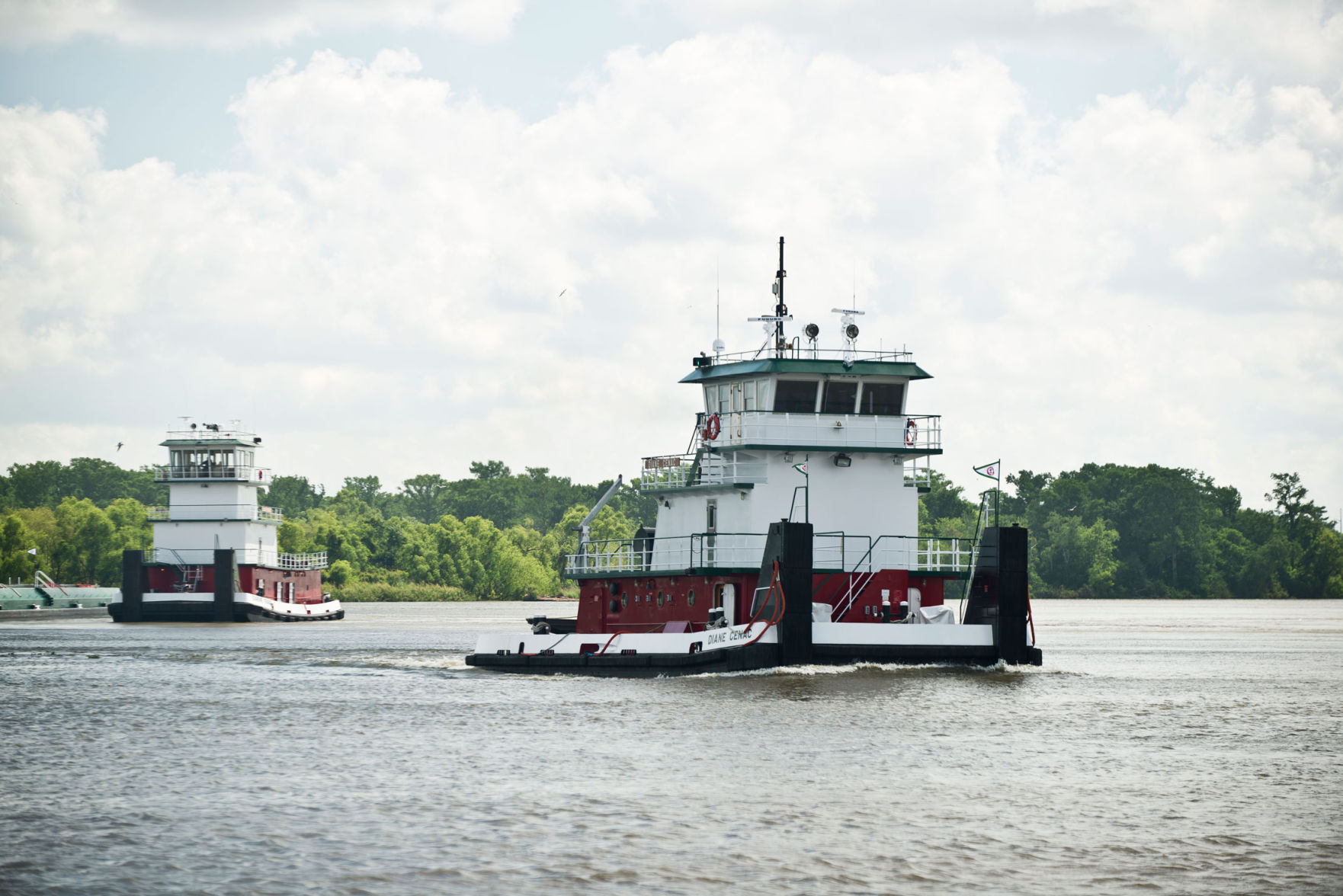
$888 million project? Fourchon LNG Terminal has sprouting wings
September 27, 2017
Port staying busy: Port of Terrebonne hopes dredging comes soon
September 27, 2017As Hurricane Harvey ravaged south Texas, three Cenac Marine Services crews danced a high-wire act on the Old River.
Three Cenac ship captains toed a fine line between protecting themselves, others and runaway barges as Harvey’s blistering gusts and rising waters endangered Houston and surrounding areas. Cenac ships and other friendly vessels nearby were able to save the barges while human life and property at the dock came away unscathed.
On the Friday night of Aug. 25, Hurricane Harvey made landfall between Port Aransas and Port O’Connor, Texas, with winds up to 130 miles per hour. Harvey was the first Category 4 hurricane to hit the United States since Charley in 2004. The next night, the Henry Cenac, Weezie Cenac and Tutty Cenac, all inland boats, were all tied up at the Boone Towing barge fleeting facility in the Old River, a narrow offshoot of the San Jacinto River in Channelview, 17 miles east of Houston. A United States Coast Guard assessment of south Texas ports on the Tuesday following the storm still classified six out of seven ports, including all four in Houston, under Port Condition Zulu, the fourth and highest-danger condition for a port. During Zulu, gale force winds are possible within 12 hours and a port is closed, with all port operations suspended except for vessel movements and activities authorized by the USCG captain of the port.
According to captain’s logs from the Cenac vessels, things started to get hairy at the Boone dock as Saturday turned to Sunday. Luke Pierce, captain of the Tutty, wrote there were about 30 barges tied up on the west side of the river and another 25 or so on the east side. Steve Lockwood had his team on the Weezie keeping watch of the situation around the clock, with the crew on standby for any barge making a move. Greg Rodrigue, captain of the Henry, said he was up at midnight monitoring the situation, as well.
Water began rising in the Old River in the early hours of that Sunday, according to Rodrigue. By Lockwood’s estimation, the river rose by about 12 feet over the next few hours. As the river got higher, the Boone fleet’s spud barges were at risk. Spud barges have vertical steel shafts that can drive into the bottom of a body of water to provide a stable working surface. At around 3 a.m., one of the Boone spud barges broke loose.
Lockwood, a Cenac veteran since 1981, had dealt with runaway barges before when he rode out Hurricane Katrina in the Mississippi River. When he saw the Boone spud break free, he fired up his engine and assisted other vessels in pushing everything back into place. At the same time, Rodrigue was on the Henry earning some stripes. He was green to breakaway barge situations, and as the Weezie grabbed the spud, the Henry grabbed five barges from E Squared Marine Service to ensure they did not start drifting. With the help of another E Squared vessel, the Henry brought the five barges over to the rest of the E squared fleet. From his vantage point on the Tutty, Pierce saw two Cenac boats and two other vessels pushing and holding about 20 barges on the river’s west side to keep them from breaking away.
On the east side, Pierce held a high alert watch, as those barges were caught on a sand bar and the rising water made them susceptible to also breaking loose. About three hours after Lockwood and Rodrigue sprung into action, the Tutty had to deal with its own problems. The tier Pierce’s vessel was on contained about 10 regulation and hopper barges, which broke loose at about 6 a.m. As it broke away, the Tutty began pushing on the barges to put them back in position. As the Tutty walked the barges toward the east bank, the tier split, prompting Pierce to ring the general alarm. Barges broke for their own paths, and as they turned the sterns kicked up. By Pierce’s estimation, the rogue barge sterns missed the Tutty by only 20-30 feet.
However, Pierce stayed on the job while reinforcements responded to the alarm. Pierce focused on the regulation barges, and vessels from Florida Marine and Devall Towing grabbed the hopper barges. The three vessels secured each barge one-by-one while the Henry and Weezie continued assisting with other breakaways throughout the day.
According to Rodrigue, the vessels at the Boone dock worked for 12 hours before everything was secure once more. By the end, the barges were back in place and the number of injuries and damages to vessels and barges stayed at a cool zero, the main concern of the crews that day.
Cenac Marine owner Arlen “Benny” Cenac praised the crews for their work on the Old River, saying the cooperation among vessels is critical in such crises.
“Cenac Marine has had the SMS hurricane policy in place for years and it has proven to be effective. Our captains know that the safest place for them and their crew is on our Cenac vessels. Every boat is made with hurricane shatter proof windows that are bolted in as an added precaution,” Cenac said. “Also, all of our boat captains and crew members are always instructed to react accordingly and to assist anyone at anytime when in need of help, whether it be a competitor or not. We are thankful that everyone successfully and safely worked together to avoid any damage to crew members or equipment.”
While documenting the brave and effective work of all the crews in Channelview that morning, Pierce also turned to a higher power for at least part of the explanation.
“It was a pure miracle that no one was hurt, nothing got damaged, and nothing sank,” Pierce said. “Everything worked out perfectly.”•






